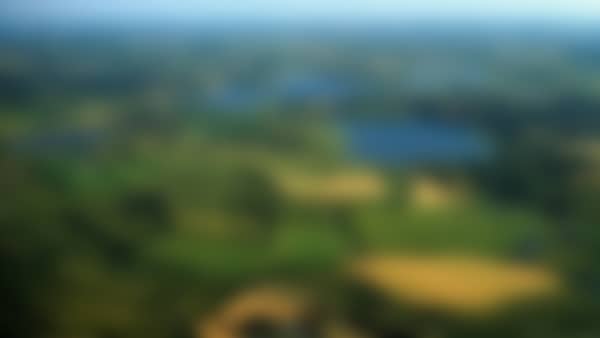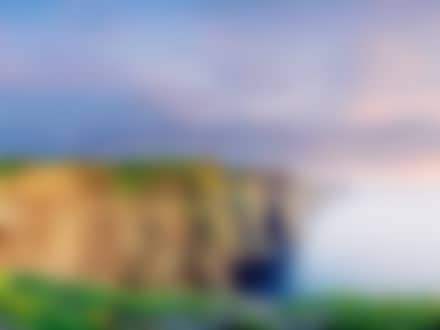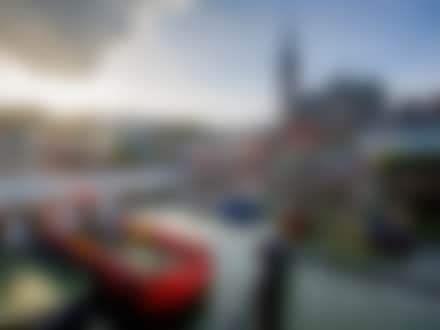About Ireland
It's said that Ireland, once visited, is never forgotten, and for once the blarney rings true. The Irish landscape has a mythic resonance, the country's history is almost tangible, and its people seem put on earth expressly to restore faith in humanity.
The weather may sometimes give you the impression that you're swimming through an airborne ocean, but the truly luminous greens, luxuriant wildflowers, and afternoons spent holed up in riotous pubs will more than console you for the webbed feet you'll need to grow. View our Ireland Vacation Packages to find a vacation deal to suit your needs.
Explore Ireland
Ireland, Europe
Overview
Small-beaked and wing-clipped, Ireland is an island in the Atlantic Ocean which appears about to alight on the coast of Britain 80km (50mi) to the west across the Irish Sea. Its cities are small, so it's never far to isolated sweeps of mountain or bogland.
Much of Ireland's elevated ground is close to the coast, and almost the entire Atlantic seaboard is a bulwark of cliffs, hills and mountains, with few safe anchorages. Most of the centre of the island is composed of flat farmland or raised bogs. This area is drained by the 260km (161mi) long Shannon, which enters the sea west of Limerick.
What To Do
The best way to get active in Ireland is to head out into its countryside on foot or cycle. The enchanting landscapes will more than make up for the occasional punishing hill. Of course, if punishing hills are your thing, there are some great mountain-climbing opportunities. You're also never far from the sea, which will delight scuba divers, sailors and surfers.
What To See
Mossy castles, glossy museums and all the green you can handle.
Religion has always been Ireland's meat and drink, and there are an abundance of sacred sites, from stone circles and dolmens to 1000-year-old early Christian churches. Castles, forts, museums and mansions, many with exquisite gardens, dot the countryside.
Blarney Castle
If you need proof of the power of a good yarn, then join the queue to get into this 15th-century castle, one of Ireland's most inexplicably popular tourist attractions.
They're here, of course, to plant their lips on the Blarney Stone, a cliché that has entered every lexicon and tour route. The object of their affections is perched at the top of a steep climb up slippery spiral staircases. On the battlements, you bend backwards over a long, long drop (with safety grill and attendant to prevent tragedy) to kiss the stone; as your shirt rides up, coach loads of onlookers stare up your nose. Once you're upright, don't forget to admire the stunning views before descending. Try not to think of the local lore about all the fluids that drench the stone other than saliva. Better yet, just don't do it.
The custom of kissing the stone (which supposedly gives one the gift of gab – if not other things) is a relatively modern one, but Blarney's association with smooth talking goes back a long time. Queen Elizabeth I is said to have invented the term 'to talk blarney' out of exasperation with Lord Blarney's ability to talk endlessly without ever actually agreeing to her demands.
Be warned: this place gets mobbed. If it all gets too much, vanish into the Rock Close, part of the beautiful and often ignored gardens. And a hint: Barryscourt Castle, east of Cork, is more impressive and much less crowded.
Blarney is 8km northwest of Cork and buses run frequently from Cork bus station (adult/child €3.30/2, 30 minutes).
Kilkenny Castle
Rising above the Nore, Kilkenny Castle is one of Ireland's most visited heritage sites. The first structure on this strategic site was a wooden tower built in 1172 by Richard de Clare, the Anglo-Norman conqueror of Ireland better known as Strongbow. In 1192, Strongbow's son-in-law, William Marshall, erected a stone castle with four towers, three of which survive. The castle was bought by the powerful Butler family in 1391, and their descendants continued to live there until 1935. Maintaining such a structure became a big financial strain and most of the furnishings were sold at auction. The castle was handed over to the city in 1967 for the princely sum of £50.One glance tells you that the castle has been modified through the centuries. First of all it's missing a wall – a key defensive deficiency. Second, there are all those windows – perfect targets, say, for a catapult. Most of the changes visible today date from the 19th century when efforts were made to banish the gloom and bring in the cheer. By then the only real defensive worry was a peasant flinging a rotten potato.
Regular 40-minute guided tours focus on the Long Gallery, in the wing of the castle nearest the river. The gallery, which showcases stuffy portraits of the Butler family members over the centuries, is an impressive hall with high ceilings vividly painted with Celtic and Pre-Raphaelite motifs.
The castle basement is also home to the Butler Gallery, one of the country's most important art galleries outside Dublin. Small exhibitions featuring the work of contemporary artists are held throughout the year. Also in the basement, the castle kitchen houses a popular summertime cafe. You can access the Butler Gallery and the cafe without paying admission.
About 20 hectares of parkland are a refuge from city nuttiness. The grounds echo with chirping birds and extend to the southeast, with a Celtic cross-shaped rose garden, a fountain to the northern end and a children's playground to the south. There are many good views of the river. The castle's former stables are now home to the Kilkenny Design Centre.
Clonmacnoise
Gloriously placed overlooking the River Shannon, Clonmacnoise is one of Ireland’s most important ancient monastic cities. The site is enclosed in a walled field and contains numerous early churches, high crosses, round towers and graves in astonishingly good condition.
Leap Castle
Leap Castle is reputedly one of the most haunted castles in Europe. Originally an O'Carroll family residence, the castle was the scene of many dreadful deeds and is famous for its eerie apparitions - its most renowned inhabitant is the 'smelly ghost', a spirit that apparently leaves a smell behind after sightings.
Mt Brandon
At 951m (3119ft), Mt Brandon (Cnoc Bhréannain) is Ireland's second-highest mountain and makes for a popular climb. It's made up of a beautiful series of high summits that lie along the edge of a spectacular series of east-facing cliffs and steep ridges above a rocky lake-filled valley. Allow at least six to seven hours for the return journey to the summit and back.
Cliffs of Moher
One of Ireland's most famous sights, the Cliffs of Moher (Aillte an Mothair, or Ailltreacha Mothair) rise to a height of 203m (666ft). They are entirely vertical and the cliff edge is abrupt. Where access is permitted there's a protecting wall. On a clear day the views are tremendous, with the Aran Islands etched on the waters of Galway Bay.
Giant's Causeway
Northern Ireland's main tourist attraction, the hexagonal basalt columns, (all 38,000 of them including the ones underwater) are amazingly uniform. A recommended walk is from the Giant's Causeway 16km (10mi) east along the coast (not the highway), past Dunseverick Castle to the beach at Whitepark Bay.
Killarney National Park
Enclosed within Killarney's 10,236-hectare (25,280-acre) national park are beautiful Lough Leane (the Lower Lake or 'Lake of Learning'), Muckross Lake and the Upper Lake, as well as the Mangerton, Torc, Shehy and Purple Mountains. Areas of oak and yew woodland stretch for miles. This is wonderful walking and biking country.
Events
Many diverse events and festivals take place around the country over the year. February sees the Dublin International Film Festival. At Easter many small towns hold parades and townsfolk gorge themselves on chocolate eggs. June 16 is Bloomsday in Dublin, with re-enactments of Ulysses and readings throughout the city. Listowel in County Kerry holds a Writers' Week literary festival during June, and there's a Jazz & Blues Festival in Belfast. July is when marching really gets into its stride in Northern Ireland, and every Orangeman hits the streets on the Glorious 12th to celebrate the Protestant victory at the Battle of the Boyne.
August is equestrian month, with the Dublin Horse Show and races in Tralee. Also in county Kerry, at Killorglin, the ancient Puck Fair heralds unrestricted drinking for days and nights. In October, Dublin has its Theatre Festival, Ballinasloe in County Galway hosts the country's largest cattle and horse fair, and Kinsale in County Cork is home to Ireland's gourmet festival. In November, Cork has its Film Festival. Christmas is a quiet affair in the countryside, though on 26 December the ancient practice of Wren Boys is reenacted, when groups of children, traditional musicians and Irish dancers perform at area homes, asking donations in exchange for a year's worth of good luck.
Health and Safety
Ireland is safer than most countries in Europe, but normal precautions should be observed. In Dublin, drug-related crime is not uncommon and the city has its fair share of pickpockets and thieves.
Northern Ireland is as safe as anywhere else, but there are areas where the sectarian divide is bitterly pronounced, most notably in parts of Belfast. For the foreseeable future, it's probably best to ensure your visit to Northern Ireland doesn't coincide with the climax of the Orange marching season on 12 July; sectarian passions are usually inflamed and even many Northerners leave the province at this time.
When to Go
If you go to Ireland in July or August, you can expect reasonably warm weather, longer days and a lively menu of festivals. However, this is peak season, which presents some challenges if you're wanting a bit of solitude.
Spring and autumn can also be delightful seasons, with smaller crowds of tourists. Winter weather can be downright inhospitable, but Ireland (the west coast in particular) does look beautiful in the rain, and there's nearly always a pub nearby to duck into. However, in many Irish towns restaurants and B&Bs close down around October and don't reopen until Easter. With a few advance phone calls you can avoid getting stranded somewhere with no place to sleep or eat.
Despite its northern latitude, Ireland's climate is moderated by the Gulf Stream, bringing the dregs of Caribbean balminess, as well as turtles and triggerfish. The temperature only drops below freezing intermittently during the winter and snow is scarce. Summers aren't really that hot, rarely hitting 30° C (86° F), but it stays light until around 23:00. Whatever the time of year, be prepared for rain because Ireland is wet. The heaviest rain usually falls where the scenery is best: luscious County Kerry can be drizzle-bound on as many as 270 days of the year. If you do find the rain getting you down you might find some comfort in the Irish saying: 'It doesn't rain in the pub'!
Entry Requirements
For EU and EEA nationals and citizens of most Western countries, including Australia, Canada, New Zealand and the USA, no visa is required to visit either the Republic or Northern Ireland, but citizens of India, China and many African countries do need a visa for the Republic.
Please contact the the appropriate consulate for up-to-date information on travel document requirements.
Money
Euro
Getting Around
There are scheduled nonstop flights from Britain, continental Europe and North America to Dublin and Shannon, and good nonstop connections from Britain and continental Europe to Cork. There are numerous ferry services between Britain and Ireland, and a few between France and Ireland, but it's definitely wise to plan ahead as fares can vary considerably.
Distances are relatively short and there's a good network of roads, but public transportation can be infrequent, expensive or both and - especially with trains - not reach many of the more interesting places.
Having your own transport is a major advantage and it's worth considering car hire for at least part of your trip. The growing network of motorways have cut journey times considerably, but the huge network of secondary and tertiary roads are much better if you want to 'experience' Ireland as you travel - although it is still true that smaller, rural roads can make for difficult driving conditions.
Travel Tips & Tools
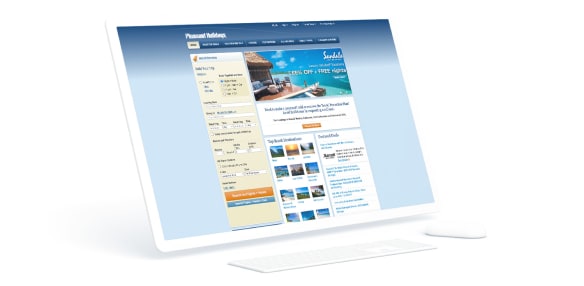

You will be transferred to our traditional site.
We are currently working on enhancements to this part of our website. A new version will be available soon. Don’t worry – switching over will not interrupt your booking.
Welcome to the all-new Pleasant Holidays booking experience !
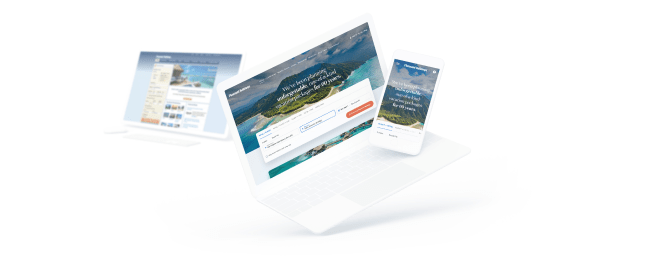

You can now plan your next vacation with our exciting new booking engine. Some advanced features are still being developed, and selecting these options may require you to return to our traditional booking experience. Don’t worry – switching over will not interrupt your booking.
We've updated your online experience to make sure you can get your dream vacation. Since our makeover is still in progress, you may experience shifts from our traditional booking experience to our new one.
Contact us
Any questions ?
Our travel advisors will be happy to help!

















